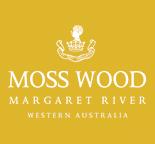 Recently I had the opportunity to taste through the wines of Moss Wood. They’re an Australian producer with a history dating to 1969. Their current winemaker Keith Mugford has been making the wines since 1979. Since 1984 Keith and his wife Clare have run the entire operation at Moss Wood. In their time at the helm they have made thoughtful advances such as being up to 75% in screw cap as far back as 2003. They’re located in Wilyabrup which is a sub-section of the Margret River region.
We started the evening by tasting a trio wines from four varietal verticals. Semillon, Chardonnay, Pinot Noir and Cabernet Sauvignon dating as far back as 1990 were the varietals and each was represented by an example from each of the last 3 decades.
Recently I had the opportunity to taste through the wines of Moss Wood. They’re an Australian producer with a history dating to 1969. Their current winemaker Keith Mugford has been making the wines since 1979. Since 1984 Keith and his wife Clare have run the entire operation at Moss Wood. In their time at the helm they have made thoughtful advances such as being up to 75% in screw cap as far back as 2003. They’re located in Wilyabrup which is a sub-section of the Margret River region.
We started the evening by tasting a trio wines from four varietal verticals. Semillon, Chardonnay, Pinot Noir and Cabernet Sauvignon dating as far back as 1990 were the varietals and each was represented by an example from each of the last 3 decades.
Moss Wood 1993 Semillon – This 20 year old Semillon has an obviously darker hue than the others which is natural for a white of this age. Bits of citrus appear on the nose along with a touch of toffee. Plenty of secondary characteristics emerge on the palate to go along with apple and a boatload of baker’s spice. This wine is still vibrant and alive. It’s a lovely and truly gorgeous example of aged Semillon.
Moss Wood 2003 Semillon – A gentle hint of Petrol emerges on the nose of this decade old Semillon. The palate is filled with a bevy of citrus notes. The finish here is long and fleshy with minerals, spice and pineapple characteristics all in abundance. This wine is delicious and giving but it will continue to evolve positively with more time.
Moss Wood 2013 Semillon – This is the current vintage and it has a suggested retail price of $42. Meyer lemon and lime notes light up the nose of this Semillon. Additional fruits such as white fig are part of the gently layered palate. The finish has good persistence and things end with bits of crispy acidity. Compared to the older vintages this wine is a bit reticent now. Time will open it up and allow it to more fully express its charms.
 Moss Wood 1991 Chardonnay – This 22 year old Chardonnay showcases a cavalcade of pure and expressive fruits. There is depth and complexity here to spare. Apple and pear flavors are joined by bits of hazelnut and toast. A bit of butter crème emerges on the finish which has excellent length and persistence. This is a gorgeous wine that exemplifies how fantastic Chardonnay can be when it’s treated appropriately all the way from vineyard to bottle.
Moss Wood 1991 Chardonnay – This 22 year old Chardonnay showcases a cavalcade of pure and expressive fruits. There is depth and complexity here to spare. Apple and pear flavors are joined by bits of hazelnut and toast. A bit of butter crème emerges on the finish which has excellent length and persistence. This is a gorgeous wine that exemplifies how fantastic Chardonnay can be when it’s treated appropriately all the way from vineyard to bottle.
Moss Wood 2003 Chardonnay – This Chardonnay has the darkest hue of the trio. The nose shows a bit of candied apple. The finish is fairly long with zippy acidity, minerals and a wisp of crème fraiche. Not quite as fresh or vibrant as either the 1991 or the 2011 but no less interesting.
Moss Wood 2011 Chardonnay – The current vintage, it has a suggested retail price of $63. Lemon custard and orchard fruits mark the deep and layered palate of this wine. Spices galore are present from the first whiff of the nose through the last, lingering note on the finish. This wine is loaded with gorgeous layers of fruit. It’s delicious now but will be even lovelier with time in the bottle. This release will likely get to a similar spot down the road that the 1991 is at today.
Moss Wood 1994 Pinot Noir – Plum aromas emerge from the still vibrant nose of this Pinot Noir along with mushroom and lot’s of secondary characteristics. Sour cherry notes dominate the palate and lead to a lengthy spice filled finish that also shows off black tea and hints of earth. This is a balanced and exquisite example of well aged Pinot Noir.
Moss Wood 2001 Pinot Noir – Red fruit, leather and a hint of smoked meat fills the expressive nose of this 12 year old Pinot Noir. Lots of cherry and strawberry star on te palate here along with hints of earth and mushroom. Minerals and sour red fruits emerge on the finish which has good persistence. Medium tannins that show a pleasing amount of grip and firm acidity speak to the wonderful structure this wine has. It’s delicious now, but certainly has quite a few years of aging ahead of it.
Moss Wood 2010 Pinot Noir – This is the current release, it has a suggested retail price of $62. Red and black cherry character dominates the nose of this Pinot. Red fruits interspersed with black, are key components throughout the palate, along with a well rounded complement of spices. All of these elements continue through the finish which has nice length. This Pinot is still young and a bit tight right now. It needs some time and a few years in bottle will serve it well. That said a few hours in the decanter are highly recommended if drinking it in the next couple of years.
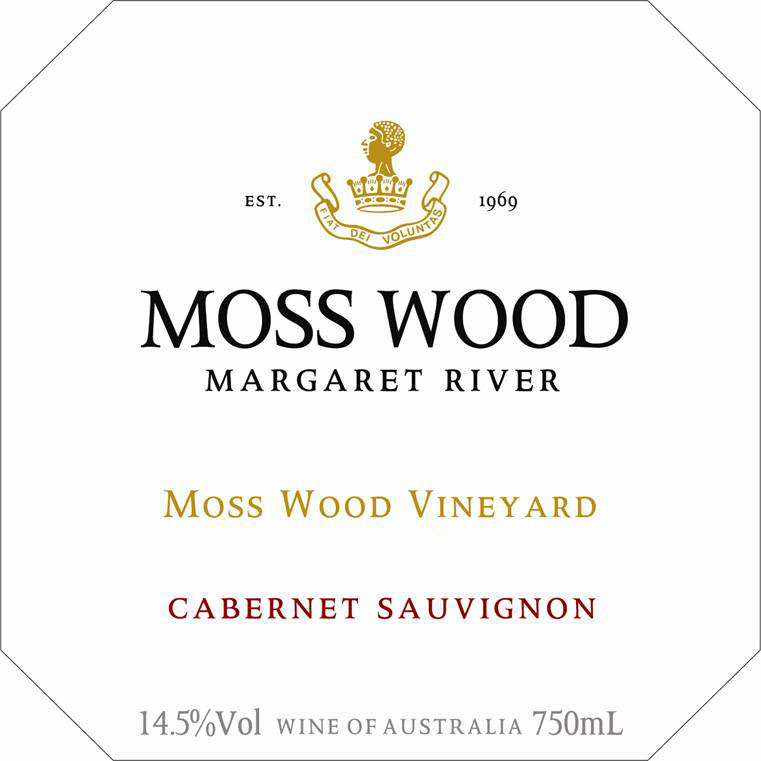 Moss Wood 1990 Cabernet Sauvignon – The fruit on this 23 year old Cabernet has receded and the secondary characteristics have really taken hold. Earth, minerals, espresso and a potpourri of spices are the dominant players here. Chocolate and leather emerge on the finish with some lingering remnants of cherry. If you like your Cabernet Sauvignon aged (and I do), this happens to be an excellent example. It’s beautifully perfumed, loaded with minerals and spice, easy drinking and layered. This is the kind of wine I could hide in the corner with, allowing it to keep me content all night long.
Moss Wood 1990 Cabernet Sauvignon – The fruit on this 23 year old Cabernet has receded and the secondary characteristics have really taken hold. Earth, minerals, espresso and a potpourri of spices are the dominant players here. Chocolate and leather emerge on the finish with some lingering remnants of cherry. If you like your Cabernet Sauvignon aged (and I do), this happens to be an excellent example. It’s beautifully perfumed, loaded with minerals and spice, easy drinking and layered. This is the kind of wine I could hide in the corner with, allowing it to keep me content all night long.
Moss Wood 2000 Cabernet Sauvignon – This wine is all about cherry characteristics. A combination of red and black cherry flavors dominates the nose and palate. Spice elements join in and continue through the finish where cherry flavors continue to ring out loud and clear. Bits of rhubarb and chicory are present as well. The tannins still have some bite and the acidity keeps things beautifully balanced. This is a fine Cabernet Sauvignon.
Moss Wood 2010 Cabernet Sauvignon – The current release, it has a suggested retail price of $105. Red and black raspberries emerge on the welcoming nose of this Cabernet Sauvignon. Blackberry, cherry and spice are all prominent through the layered palate which shows lots of depth. Blueberry, spices and espresso notes dot the finish which has good length. The tannins here are firm but give with some air. This is a young but approachable Cabernet Sauvignon that will improve greatly with several more years of age. It’s a promising wine that will only become better.
After the vertical tasting we moved on to sample a handful of their other releases alongside our dinner at CraftBar. Three of them were blends and they were lovely wines well suited to our meal. But for me the knockout amongst this quartet was the final wine which was paired with dessert.
Moss Wood Ribbonvale Botrytis 2011 Semillon – This wine was slowly fermented and then racked to barrel. It was bottled in January of this year. It’s available in both 375ml ($38), and 750ml ($70) bottles. Mission fig aromas are part of the nose on this lovely dessert wine. The palate is sweet but not overly so with 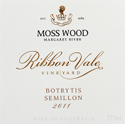 a variety of fruit and spice flavors coming to the forefront. Fruitcake spices emerge on the honeyed finish which has great length and nice acidity. This wine works equally well paired with other sweets or a cheese course.
a variety of fruit and spice flavors coming to the forefront. Fruitcake spices emerge on the honeyed finish which has great length and nice acidity. This wine works equally well paired with other sweets or a cheese course.
Tasting these wines in such a setting allowed us to see their aging potential as well as take a look at what the level of consistency is. While there was certainly vintage variation and some stylistic differences as they have made some adjustments in treatment over the years, each varietal had connective tissues within their subset that allowed us to see how they related to each other. The key here is that these wines were all made in a style that allowed their origin in the Margaret River to be showcased along with the vagaries of what each vintage brings. These are not manipulated products but vineyard driven wines that are allowed to shine. Each varietal is shepherded into bottle in a manner that makes long term aging not only possible but interesting and exciting. The Moss Wood wines taken as a whole were quite impressive. They’re fine examples of their place, their respective grapes and their particular vintages. If it’s been awhile since you’ve had top shelf Australian wine, the offerings from Moss Wood are a perfect spot to leap back in.
 The Davis Bynum 2011 River West Chardonnay was produced from fruit sourced exclusively at the namesake vineyard. Blocks of fruit from this vineyard were harvested separately and each batch was pressed and fermented separately. Barrel aging took place over 10 months in entirely French oak. This wine has a suggested retail price of $30. Gravenstein apple and baker’s spice aromas are in full force on the nose of this Chardonnay. The palate is fruit and spice driven with apples, pear, pineapple, cinnamon and clove all in evidence. Hint of lemon curd lead the finish along with minerals and a copious amount of spice. This Chardonnay is rich and round with crispy acidity. It’s delicious sipped alone but will flourish with lighter fare.
The Davis Bynum 2011 River West Chardonnay was produced from fruit sourced exclusively at the namesake vineyard. Blocks of fruit from this vineyard were harvested separately and each batch was pressed and fermented separately. Barrel aging took place over 10 months in entirely French oak. This wine has a suggested retail price of $30. Gravenstein apple and baker’s spice aromas are in full force on the nose of this Chardonnay. The palate is fruit and spice driven with apples, pear, pineapple, cinnamon and clove all in evidence. Hint of lemon curd lead the finish along with minerals and a copious amount of spice. This Chardonnay is rich and round with crispy acidity. It’s delicious sipped alone but will flourish with lighter fare.

 With a boat load of holidays approaching everyone is thinking about their wine and spirits needs. The first thing on peoples minds is likely to be the wines they'll serve if they're hosting a holiday or what to bring over as a guest at someone’s home. Those are important, but I think it’s as important to consider wines to have around for the multitude of more casual get-togethers that happen during the long holiday season that happens from Thanksgiving through the New Year. With that in mind here’s a look at two budget friendly wines from Gnarly Head that fit the bill for casual entertaining, late night snack pairing and just any old time you want to open a bottle without breaking the budget.
First up is the Gnarly Head 2012 Chardonnay. The fruit for this wine came from vineyards in Lodi and Monterey California. Grapes were fermented in a combination of oak and stainless steel; 40% underwent malolactic fermentation. In addition to Chardonnay (84%), this wine has some Chenin Blanc (10%), Malvasia Bianca (4%) and Viognier (2%) blended in. 50,000 cases of this wine were produced and it has a suggested retail price of $9.99. Golden Delicious apple aromas are joined by toast and spice on the welcoming nose of this Chardonnay. Vibrant orchard fruit flavors define the palate. A copious amount of bakers spices are present as well. The crisp and fruity finish which has solid length shows off green apple and white pepper. This is a clean and refreshing Chardonnay that drinks well on it’s own, as well as paired well with classic Chardonnay loving dishes. Pastas with creamy sauces, roasted white meets and rich cheeses all come to mind.
With a boat load of holidays approaching everyone is thinking about their wine and spirits needs. The first thing on peoples minds is likely to be the wines they'll serve if they're hosting a holiday or what to bring over as a guest at someone’s home. Those are important, but I think it’s as important to consider wines to have around for the multitude of more casual get-togethers that happen during the long holiday season that happens from Thanksgiving through the New Year. With that in mind here’s a look at two budget friendly wines from Gnarly Head that fit the bill for casual entertaining, late night snack pairing and just any old time you want to open a bottle without breaking the budget.
First up is the Gnarly Head 2012 Chardonnay. The fruit for this wine came from vineyards in Lodi and Monterey California. Grapes were fermented in a combination of oak and stainless steel; 40% underwent malolactic fermentation. In addition to Chardonnay (84%), this wine has some Chenin Blanc (10%), Malvasia Bianca (4%) and Viognier (2%) blended in. 50,000 cases of this wine were produced and it has a suggested retail price of $9.99. Golden Delicious apple aromas are joined by toast and spice on the welcoming nose of this Chardonnay. Vibrant orchard fruit flavors define the palate. A copious amount of bakers spices are present as well. The crisp and fruity finish which has solid length shows off green apple and white pepper. This is a clean and refreshing Chardonnay that drinks well on it’s own, as well as paired well with classic Chardonnay loving dishes. Pastas with creamy sauces, roasted white meets and rich cheeses all come to mind. The folks at
The folks at  Recently I had the opportunity to taste through the wines of
Recently I had the opportunity to taste through the wines of  Moss Wood 1991 Chardonnay – This 22 year old Chardonnay showcases a cavalcade of pure and expressive fruits. There is depth and complexity here to spare. Apple and pear flavors are joined by bits of hazelnut and toast. A bit of butter crème emerges on the finish which has excellent length and persistence. This is a gorgeous wine that exemplifies how fantastic Chardonnay can be when it’s treated appropriately all the way from vineyard to bottle.
Moss Wood 1991 Chardonnay – This 22 year old Chardonnay showcases a cavalcade of pure and expressive fruits. There is depth and complexity here to spare. Apple and pear flavors are joined by bits of hazelnut and toast. A bit of butter crème emerges on the finish which has excellent length and persistence. This is a gorgeous wine that exemplifies how fantastic Chardonnay can be when it’s treated appropriately all the way from vineyard to bottle.
 a variety of fruit and spice flavors coming to the forefront. Fruitcake spices emerge on the honeyed finish which has great length and nice acidity. This wine works equally well paired with other sweets or a cheese course.
a variety of fruit and spice flavors coming to the forefront. Fruitcake spices emerge on the honeyed finish which has great length and nice acidity. This wine works equally well paired with other sweets or a cheese course.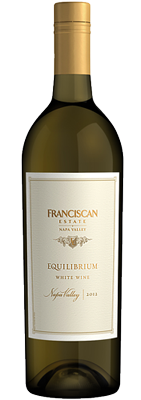 I've been enjoying wines from Franciscan Estate since my earliest familiarity with Napa Valley. In that time they've featured a consistently appealing portfolio of wines. Franciscan has also been steady in terms of what they release; their core has remained reliable as well. However every now and then they add something new. This summer it’s a new white blend, focused mostly on two varietals they have worked with for years. Here’s a look at it.
The Franciscan Estate 2012 Equilibrium is the inaugural release of this wine. This white blend combines Sauvignon Blanc (72%), Chardonnay (17%), and Muscat (11%). All of the fruit for this wine was sourced in Napa Valley. 83% of the fruit was fermented in stainless steel and the remaining 17% in barrel. Just fewer than 6,000 cases of Equilibrium were produced and it has a suggested retail price of $22.99. This wine leads with a killer nose; tropical and stone fruit aromas simply burst out of the glass invitingly. Equilibrium’s palate is studded with an array of engaging bright fruit flavors; white peach, guava and mango are of particular note here. Lemon curd, white pepper and continued tropical fruit flavors abound on the finish which has nice length. This wine is soft, round, lush and mouth-filling.
I've been enjoying wines from Franciscan Estate since my earliest familiarity with Napa Valley. In that time they've featured a consistently appealing portfolio of wines. Franciscan has also been steady in terms of what they release; their core has remained reliable as well. However every now and then they add something new. This summer it’s a new white blend, focused mostly on two varietals they have worked with for years. Here’s a look at it.
The Franciscan Estate 2012 Equilibrium is the inaugural release of this wine. This white blend combines Sauvignon Blanc (72%), Chardonnay (17%), and Muscat (11%). All of the fruit for this wine was sourced in Napa Valley. 83% of the fruit was fermented in stainless steel and the remaining 17% in barrel. Just fewer than 6,000 cases of Equilibrium were produced and it has a suggested retail price of $22.99. This wine leads with a killer nose; tropical and stone fruit aromas simply burst out of the glass invitingly. Equilibrium’s palate is studded with an array of engaging bright fruit flavors; white peach, guava and mango are of particular note here. Lemon curd, white pepper and continued tropical fruit flavors abound on the finish which has nice length. This wine is soft, round, lush and mouth-filling. Cuvaison Winery
Cuvaison Winery
 I’ve personally been drinking wines from Napa Valley’s
I’ve personally been drinking wines from Napa Valley’s 

 The Rodney Strong Vineyards 2010 Chalk Hill Chardonnay was produced entirely from fruit sourced in the Chalk Hill appellation of Sonoma County. This offering is 100% Chardonnay. 92% of the wine was fermented in French oak and underwent malolactic fermentation. That portion was also aged in new and seasoned barrels for 9 months; the balance was fermented and aged in stainless steel. This widely available wine has a suggested retail price of $20. Aromas of vanilla, lemon zest and subtle toast emerge from the nose of this Chardonnay. Bartlett pear and yellow delicious apple flavors are dominant through the palate along with a wallop of zesty lemon curd which is one of the hallmarks of this wine year after year. Minerals, white pepper and baker’s spice are part of the finish along with hints of creaminess. Firm structure marked by solid acidity makes this a Chardonnay well heeled to pair with a variety of food styles. The Chalk Hill release from Rodney Strong is in that beautiful middle ground of Chardonnays that showcase pure fruit that are enhanced by judicious use of oak which is clearly present but never detracts. Drink it up, they make more every year.
The Rodney Strong Vineyards 2010 Chalk Hill Chardonnay was produced entirely from fruit sourced in the Chalk Hill appellation of Sonoma County. This offering is 100% Chardonnay. 92% of the wine was fermented in French oak and underwent malolactic fermentation. That portion was also aged in new and seasoned barrels for 9 months; the balance was fermented and aged in stainless steel. This widely available wine has a suggested retail price of $20. Aromas of vanilla, lemon zest and subtle toast emerge from the nose of this Chardonnay. Bartlett pear and yellow delicious apple flavors are dominant through the palate along with a wallop of zesty lemon curd which is one of the hallmarks of this wine year after year. Minerals, white pepper and baker’s spice are part of the finish along with hints of creaminess. Firm structure marked by solid acidity makes this a Chardonnay well heeled to pair with a variety of food styles. The Chalk Hill release from Rodney Strong is in that beautiful middle ground of Chardonnays that showcase pure fruit that are enhanced by judicious use of oak which is clearly present but never detracts. Drink it up, they make more every year. The Silverado Trail in Napa Valley has been flourishing for years now. However it’s not nearly as populated as Highway 29, and on a busy day it’s still a safe bet for easier travelling. But it’s no longer the secret it may once have been. Savvy wine lovers know that there are excellent wineries of every size and scope throughout Napa Valley, Silverado Trail is a microcosm of that with both small family owned wineries and larger producers dotting its landscape.
The Silverado Trail in Napa Valley has been flourishing for years now. However it’s not nearly as populated as Highway 29, and on a busy day it’s still a safe bet for easier travelling. But it’s no longer the secret it may once have been. Savvy wine lovers know that there are excellent wineries of every size and scope throughout Napa Valley, Silverado Trail is a microcosm of that with both small family owned wineries and larger producers dotting its landscape. 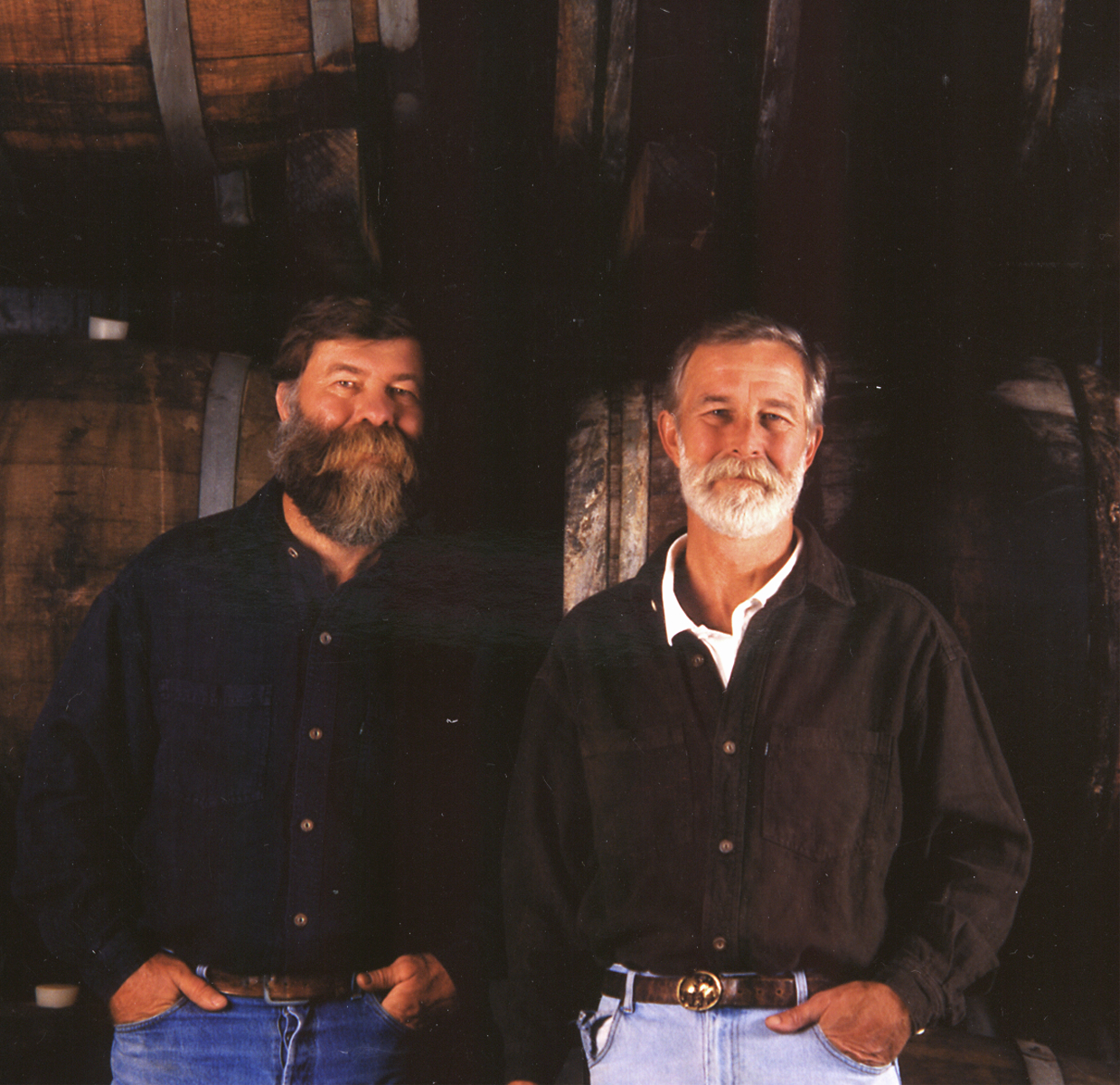 Sometimes wine lovers bemoan the state of Napa Valley. People are heard to complain about the number of ostentatious wineries and tasting room that have taken hold of the Valley and along with that they talk about how it was in the old days when Napa had a small number of producers and a visit meant tasting with the owner who was often also the winemaker. The trouble with that line of thought is that there are still many family owned Wineries in Napa Valley that belie the image of Napa as only lavish tasting rooms and over the top facilities.
Sometimes wine lovers bemoan the state of Napa Valley. People are heard to complain about the number of ostentatious wineries and tasting room that have taken hold of the Valley and along with that they talk about how it was in the old days when Napa had a small number of producers and a visit meant tasting with the owner who was often also the winemaker. The trouble with that line of thought is that there are still many family owned Wineries in Napa Valley that belie the image of Napa as only lavish tasting rooms and over the top facilities.
 First up is the Smith-Madrone Vineyards and Winery 2009 Chardonnay. All of the fruit for this wine came from their home ranch on Spring Mountain. Their Chardonnay vines have 37 years of age on them. This offering which is entirely Chardonnay was barrel fermented and aged in entirely new French oak over a nine month period. Just over 500 cases were produced and it has a suggested retail price of $35. Apple pie aromas dominate the nose of this Chardonnay and they are underscored by pleasing hints of lemon curd. The palate is marked by the intensity of its Chardonnay character in the form of pure and unadulterated fruit. Apple flavors dominate things here with spice and minerals galore to add to the complexity. Nutmeg, clove and continued mineral characteristics are all in evidence on the finish which has excellent length. Firm, zippy acidity adds to the wonderful structure and balance of this Chardonnay. The Smith-Madrone Chardonnay is nothing short of an absolute joy to drink. It’s also a wine that will age gracefully and be quite enjoyable and drinkable over the next 8 or so years at minimum.
First up is the Smith-Madrone Vineyards and Winery 2009 Chardonnay. All of the fruit for this wine came from their home ranch on Spring Mountain. Their Chardonnay vines have 37 years of age on them. This offering which is entirely Chardonnay was barrel fermented and aged in entirely new French oak over a nine month period. Just over 500 cases were produced and it has a suggested retail price of $35. Apple pie aromas dominate the nose of this Chardonnay and they are underscored by pleasing hints of lemon curd. The palate is marked by the intensity of its Chardonnay character in the form of pure and unadulterated fruit. Apple flavors dominate things here with spice and minerals galore to add to the complexity. Nutmeg, clove and continued mineral characteristics are all in evidence on the finish which has excellent length. Firm, zippy acidity adds to the wonderful structure and balance of this Chardonnay. The Smith-Madrone Chardonnay is nothing short of an absolute joy to drink. It’s also a wine that will age gracefully and be quite enjoyable and drinkable over the next 8 or so years at minimum. The second wine today is the Smith-Madrone Vineyards and Winery 2006 Cabernet Sauvignon. All of the fruit came from their home ranch in the Spring Mountain area of Napa Valley. In addition to Cabernet Sauvignon (85%), this wine contains Merlot (6%), and Cabernet Franc (9%). The vines had 34 years of age on them at the time of harvest. This Cabernet spent 22 months aging in American oak. The Smith-Madrone Cabernet Sauvignon was bottled unfined and unfiltered. Just fewer than 1,500 cases were produced and it has a suggested retail price of $45. Aromas of fresh black fruits such as blackberry, currant, and black cherry fill the inviting nose of this 2006 Cabernet Sauvignon. Wisps of toast and herb characteristics are present as well. There is a depth, power and complexity to the palate of this wine that immediately impresses as soon as you take a sip and let it envelop your senses. This wine is intense but precise and measured. As with all of the Smith-Madrone wines it’s balanced and proportionate. Cherry flavors, both black and red dominate the palate along with hints of mushroom and leather as well as black pepper. The finish here is long and lush with the depth that is often associated with great Napa Mountain Cabernet. Earth, baker’s chocolate, black tea and hints of graphite are all present. This Cabernet will certainly age and improve in the bottle over the next 15 or so years. However it’s quite ready to drink now, a benefit of Charles and Stu holding their wines until they are drinkable. If you do drink it now you have the choice of decanting it for an hour or so or watching as it develops in your glass over a leisurely meal. In any case you’ll be drinking one of the very best Cabernet’s from Napa Valley regardless of price point.
The second wine today is the Smith-Madrone Vineyards and Winery 2006 Cabernet Sauvignon. All of the fruit came from their home ranch in the Spring Mountain area of Napa Valley. In addition to Cabernet Sauvignon (85%), this wine contains Merlot (6%), and Cabernet Franc (9%). The vines had 34 years of age on them at the time of harvest. This Cabernet spent 22 months aging in American oak. The Smith-Madrone Cabernet Sauvignon was bottled unfined and unfiltered. Just fewer than 1,500 cases were produced and it has a suggested retail price of $45. Aromas of fresh black fruits such as blackberry, currant, and black cherry fill the inviting nose of this 2006 Cabernet Sauvignon. Wisps of toast and herb characteristics are present as well. There is a depth, power and complexity to the palate of this wine that immediately impresses as soon as you take a sip and let it envelop your senses. This wine is intense but precise and measured. As with all of the Smith-Madrone wines it’s balanced and proportionate. Cherry flavors, both black and red dominate the palate along with hints of mushroom and leather as well as black pepper. The finish here is long and lush with the depth that is often associated with great Napa Mountain Cabernet. Earth, baker’s chocolate, black tea and hints of graphite are all present. This Cabernet will certainly age and improve in the bottle over the next 15 or so years. However it’s quite ready to drink now, a benefit of Charles and Stu holding their wines until they are drinkable. If you do drink it now you have the choice of decanting it for an hour or so or watching as it develops in your glass over a leisurely meal. In any case you’ll be drinking one of the very best Cabernet’s from Napa Valley regardless of price point. The
The 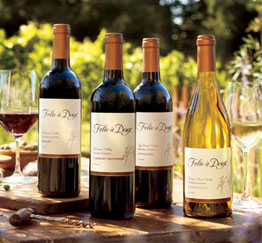 Folie à Deux
Folie à Deux Recently, I had the opportunity to taste a number of
Recently, I had the opportunity to taste a number of  and each vintage the finest lots are selected to assemble The Puzzle. As such the varietal composition can vary greatly from one year to the next. The current release is a blend of Merlot (42%), Cabernet Sauvignon (36%), Cabernet Franc (14%), Petit Verdot (6%) and Malbec (2%). Aging occurred over 20 months in entirely French oak. This wine has a suggested retail price of $80.
and each vintage the finest lots are selected to assemble The Puzzle. As such the varietal composition can vary greatly from one year to the next. The current release is a blend of Merlot (42%), Cabernet Sauvignon (36%), Cabernet Franc (14%), Petit Verdot (6%) and Malbec (2%). Aging occurred over 20 months in entirely French oak. This wine has a suggested retail price of $80.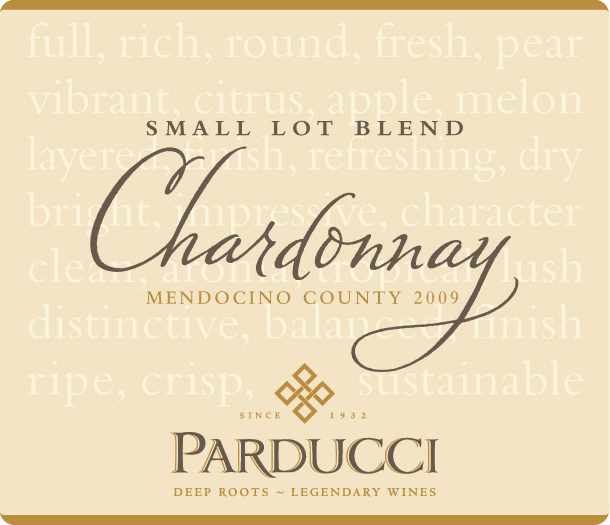 Parducci Wine Cellars
Parducci Wine Cellars Jacob’s Creek is one of those Australian brands that is widely available on US shelves; so it’s likely their packaging and logo have some familiarity to wine lovers. Vintage to vintage they tend to release wines that showcase individual personality and the genuine variation expected in vineyard driven releases. Today I’ll look at two of their current wines.
The Jacob’s Creek 2010 Reserve Chardonnay was produced from fruit sourced in the Adelaide Hills region ofAustralia. This widely available offering has a suggested retail price of $12.99 and often sells for closer to $10.
Jacob’s Creek is one of those Australian brands that is widely available on US shelves; so it’s likely their packaging and logo have some familiarity to wine lovers. Vintage to vintage they tend to release wines that showcase individual personality and the genuine variation expected in vineyard driven releases. Today I’ll look at two of their current wines.
The Jacob’s Creek 2010 Reserve Chardonnay was produced from fruit sourced in the Adelaide Hills region ofAustralia. This widely available offering has a suggested retail price of $12.99 and often sells for closer to $10.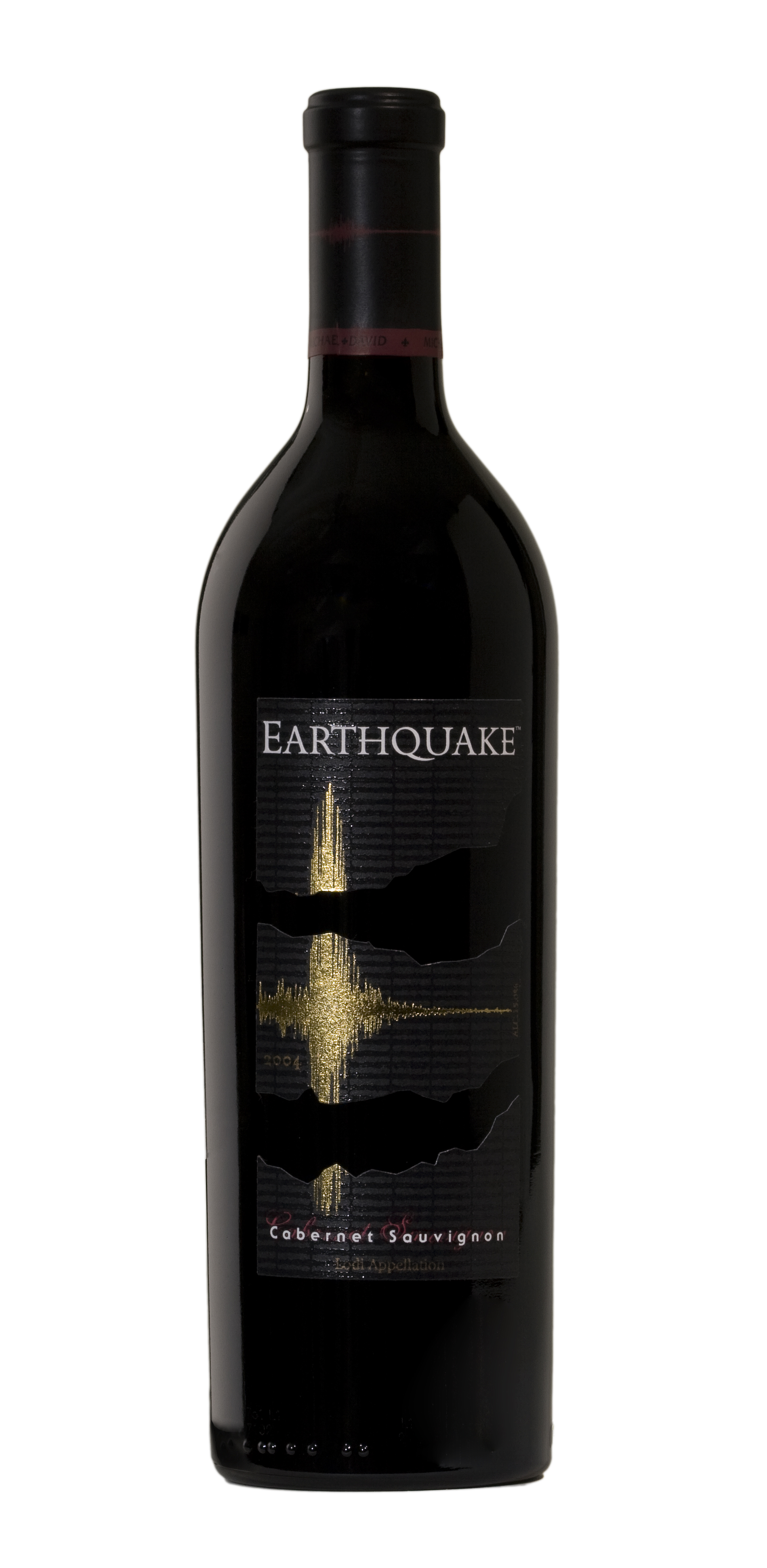 Michael David Winery makes a wide array of offerings from fruit sourced in their native region of Lodi California. Their focus is the production of engaging, fruit forward wines loaded with flavor and curb appeal. The offerings the make are widely available across the country at a cross section of budget friendly prices. Today I’ll look at two of their current release offerings.
The Michael David Winery 2010 Incognito White was produced using fruit sourced in the Lodi California Appellation. This wine is a blend of Viognier (63%), Chardonnay (21%),Muscat (7%), Sauvignon Blanc (5%) and Roussanne (4%). Incognito White was fermented and aged in stainless steel; this offering had no oak contact. The suggested retail price for this widely available wine is $18.
Michael David Winery makes a wide array of offerings from fruit sourced in their native region of Lodi California. Their focus is the production of engaging, fruit forward wines loaded with flavor and curb appeal. The offerings the make are widely available across the country at a cross section of budget friendly prices. Today I’ll look at two of their current release offerings.
The Michael David Winery 2010 Incognito White was produced using fruit sourced in the Lodi California Appellation. This wine is a blend of Viognier (63%), Chardonnay (21%),Muscat (7%), Sauvignon Blanc (5%) and Roussanne (4%). Incognito White was fermented and aged in stainless steel; this offering had no oak contact. The suggested retail price for this widely available wine is $18.